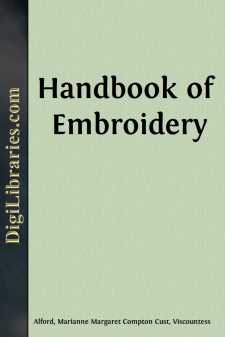Non-Classifiable
- Non-Classifiable 1768
Non-Classifiable Books
Sort by:
PICKWICKIAN MANNERS AND CUSTOMS. No English book has so materially increased the general gaiety of the country, or inspired the feeling of comedy to such a degree as, “The Pickwick Club.” It is now some “sixty years since” this book was published, and it is still heartily appreciated. What English novel or story is there which is made the subject of notes and commentaries on the most...
more...
by:
Fanny E. Coe
Preface here is no need here to enter a plea for story-telling. Its value in the home and in the school is assured. Miss Bryant, in her charming book, How to Tell Stories to Children, says, "Perhaps never, since the really old days, has story-telling so nearly reached a recognized level of dignity as a legitimate and general art of entertainment as now." And, in the guise of entertainment, the...
more...
by:
Sanger Brown
CHAPTER I Simple Sex Worship Psychiatry, during recent years, has found it to its advantage to turn to related sciences and allied branches of study for the explanation of a number of the peculiar symptoms of abnormal mental states. Of these related studies, none have been of greater value than those which throw light on the mental development of either the individual or the race. In primitive races we...
more...
by:
Allen Johnson
CHAPTER I The dramatic moments in the colonizing of coastal New England have passed into song, story, and sober chronicle; but the farther migration of the English people, from tide-water to interior, has been too prosaic a theme for poets and too diverse a movement for historians. Yet when all the factors in our national history shall be given their full value, none will seem more potent than the...
more...
PREFACE. In drawing up this little “Handbook of Embroidery” we do not pretend to give such complete technical directions as would enable a beginner in this beautiful art to teach herself; because learning without practical lessons must be incomplete, and can only lead to disappointment. We have sought, therefore, only to respond to the inquiries we are constantly receiving, and to supply useful...
more...
INTRODUCTION This booklet concerning the study of fingerprints has been prepared by the Federal Bureau of Investigation for the use of interested law enforcement officers and agencies, particularly those which may be contemplating the inauguration of fingerprint identification files. It is based on many years' experience in fingerprint identification work out of which has developed the largest...
more...
PREFACE This little volume is intended as a handbook for those who are beginning to do charitable work in the homes of the poor, whether as individuals or as representatives of some church, or of some religious society, such as the King's Daughters, the Epworth League, or the Christian Endeavor Society. The term "friendly visitor" does not apply to one who aimlessly visits the poor for a...
more...
CHAPTER I. Early Training. Birth of Christopher Carson.—Perils of the Wilderness.—Necessary Cautions.—Romance of the Forest.—The Far West.—The Encampment.—The Cabin and the Fort.—Kit an Apprentice.—The Alarm.—Destruction of a Trading Band.—The Battle and the Flight.—Sufferings of the Fugitives.—Dreadful Fate of Mr. Schenck.—Features of the Western Wilderness.—The March....
more...
by:
Anonymous
Handbook of Wool Knitting and Crochet A Lesson in KnittingFigure 1. Casting on with Two NeedlesThe first thing to be done in knitting is to cast on or, as it is sometimes called, to "set up the foundation." (). There are several methods for this, the following being that preferred and generally used by the writer: Leave a spare end of thread, sufficient for the number of stitches you wish to...
more...
by:
Augustin Calmet
INTRODUCTION. Among the many phases presented by human credulity, few are more interesting than those which regard the realities of the invisible world. If the opinions which have been held on this subject were written and gathered together they would form hundreds of volumes—if they were arranged and digested they would form a few, but most important. It is not merely because there is in almost...
more...











